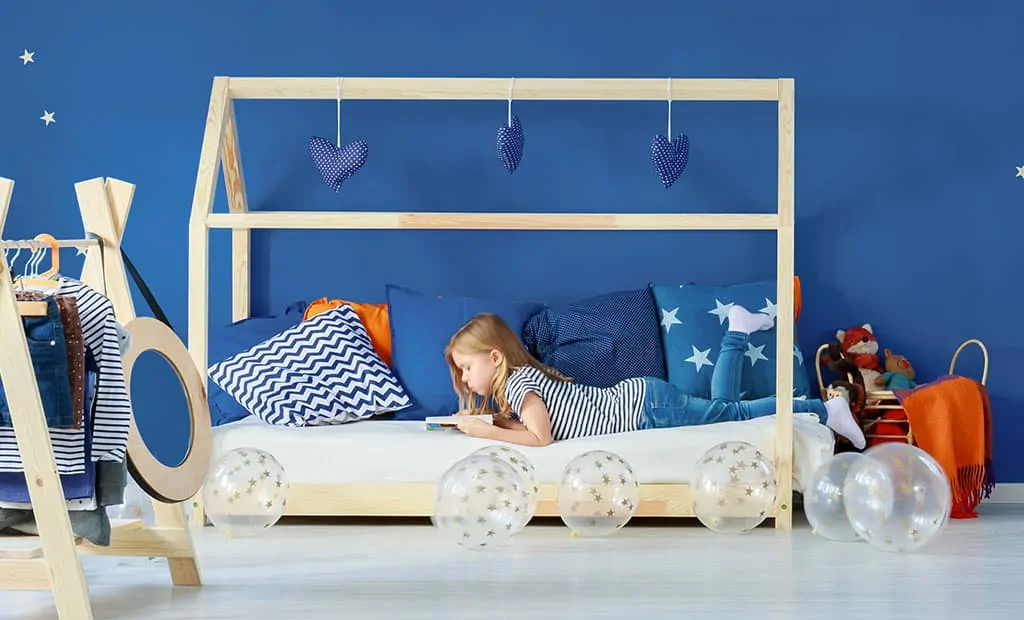The real estate sector has been on a high recently. But what is the right house without proper interior deco? Ever thought of including kid’s room colors?
Red, orange, yellow, green, blue, indigo, and violet, that’s as much as most people know in terms of colors because of the rainbow.
The casual cream or plain dull color is what most houses are exposed to, and you can barely see the difference between two homes. But worry not for we are in the modern days and modern technology’s got us covered. So let’s get down to business and learn a couple of different things regarding the painting game of kids’ rooms.
This article offers help with the purpose and psychological point of view of room colors for kids and numerous different color ideas for toddlers’ rooms.
What Do Different Colors Mean?
You can work magic from scratch on your journey of transforming your kid’s room colors to have an outstanding view. But what impact does it have on the kid?
From what we know, scary movies can cause nightmares, and characters in a book can influence the behavior of a child. With this in mind, you have to do a proper background check on the different meanings and significance of colors before painting the walls of your toddler’s room.
Let’s take a look at several colors and their gravity as well.
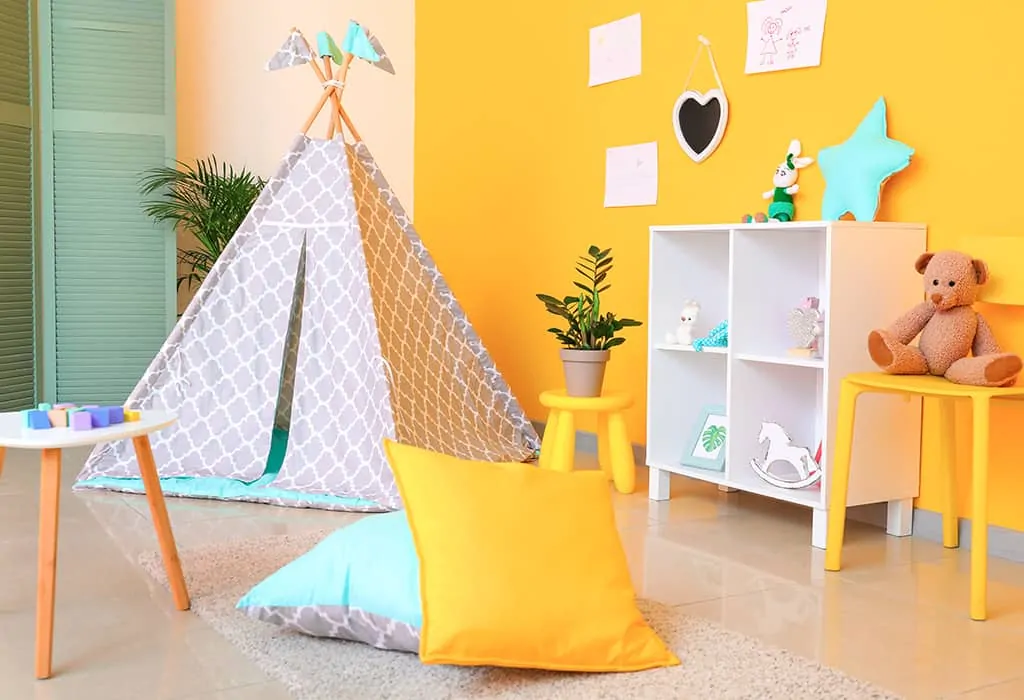
1. Striking Yellow
This bright color portrays a sunlit vibe and a cleanroom. A room that has yellow paint gives out a brilliant daytime view. This is effective for activities that require concentrations such as reading or working on a project on your computer.
Since there is a concentration, a kid that studies are such a room has a better capacity to recall things that they have learned. On the negative side of things, this illuminating aspect of the yellow color might give a kid a hard time to catch sleep when it’s time to sleep.
The dense daytime effect can be so much that it eventually makes things tough for the child to get sleepy. These improper sleeping habits can subsequently affect the kid’s overall performance.
It is advised to blend yellow with slightly darker colors like blue or green to strike a balance. This combination of kids’ room paint design gives yellow the chance of spiking out that bright intensity and allows the dark colors room to neutralize the lighting at night.
Proper proportions will enable the kid to be able to focus well during the day and also rest appropriately at night. Sounds like an ideal combo, right?
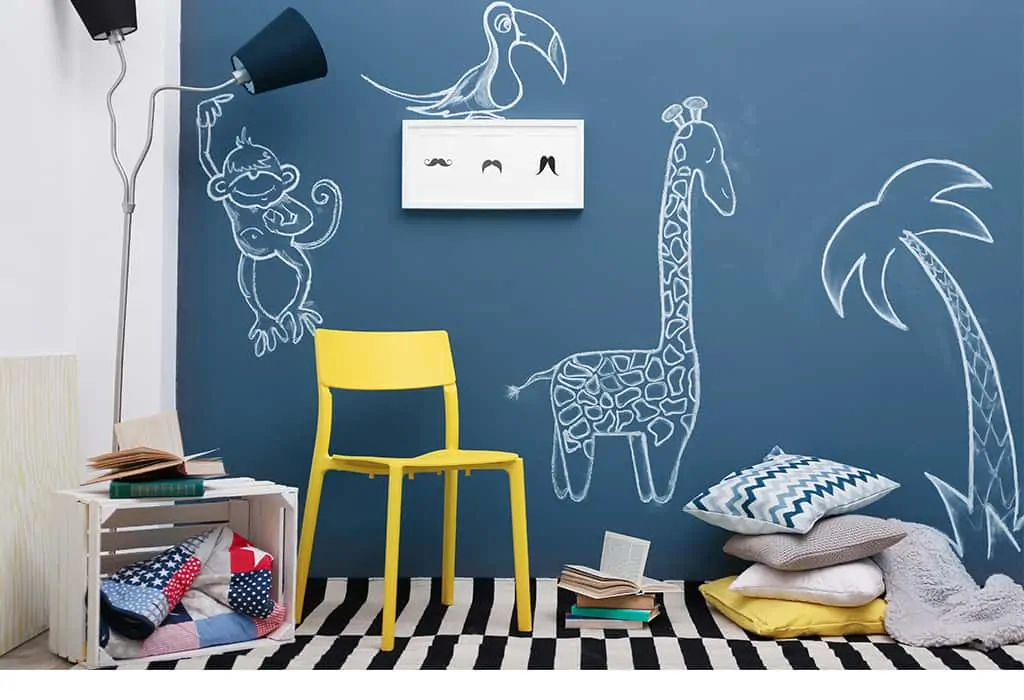
2. Bold Blue
Blue is quite a bold color, and it is often associated with the boy child. Well, the male gender doesn’t have many choices in terms of colors because, to them, the darker, the better.
However, just the right amount of shade of blue can be right for a young girl. Blue has its share of benefits too from moderating blood pressure, help in calming down distressed individuals, and further moderate their breathing. So much for color, don’t you think? Walls have ears, they say, but with a shade of blue, they can as well provide healing.
Despite the wonders, the blue color can do, try not to overdo it. The ideal concentration and blending it with another color can give you the perfection you need. Colors like red and yellow can merge well with blue to form a great view of the room. Nonetheless, the blends don’t have to be paint colors for kids’ rooms. A shelf of books, wardrobe, or even paintings with the additional colors can give a blue wall the justice it deserves.
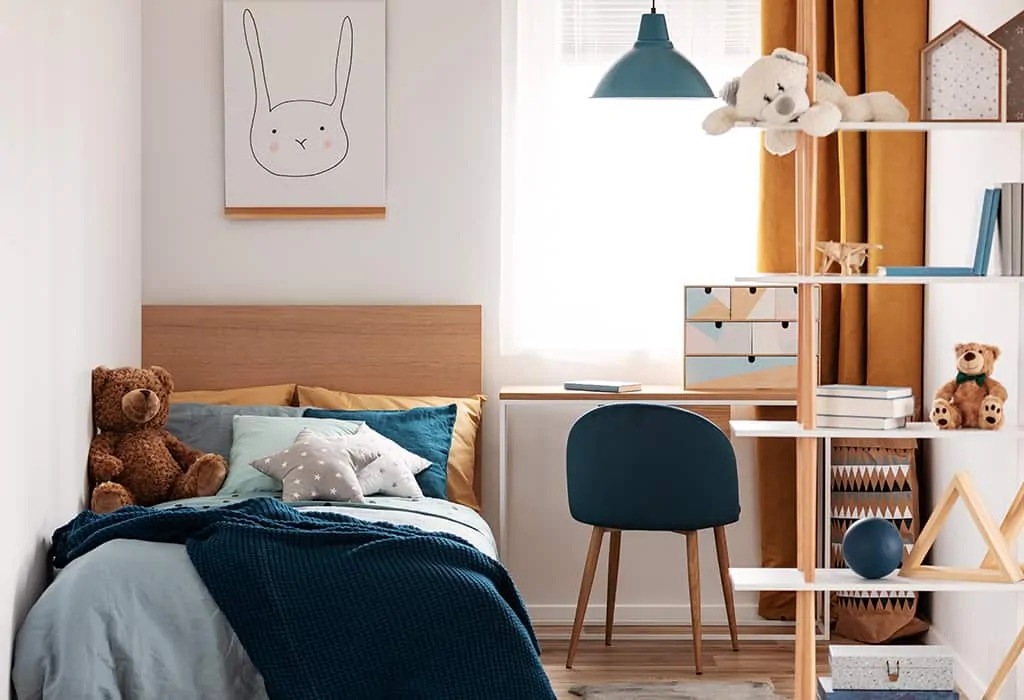
3. Nutty Brown
Speaking of dark colors, brown tends to top the list. Brown is a natural, fancy, ‘royal,’ and deep color. The general appearance of the earth’s floor is well represented by this color when included in a room, and the natural feeling is brought out by this.
When deciding on wall colors for kids’ rooms, brown can be a great choice as an environmental look. Furthermore, brown can be an excellent background for intended artistic explorations if you, as a parent, would like to design your own room for kids.
Different freestyle splashes can be made on top of a plain brown wall to provide an excellent view. A caution, though! Excess brown can shade the room. A resulting feeling of unease can cause discomfort to a child. If your child is agitated, it is not recommended to border them with brown.
You can try the bright kid’s room curtains ideas that can be included to provide an even tone to the room. Similarly, shades of light or slightly dark brown can best fit. Brown can be the best color to do the best bed rails for toddlers.
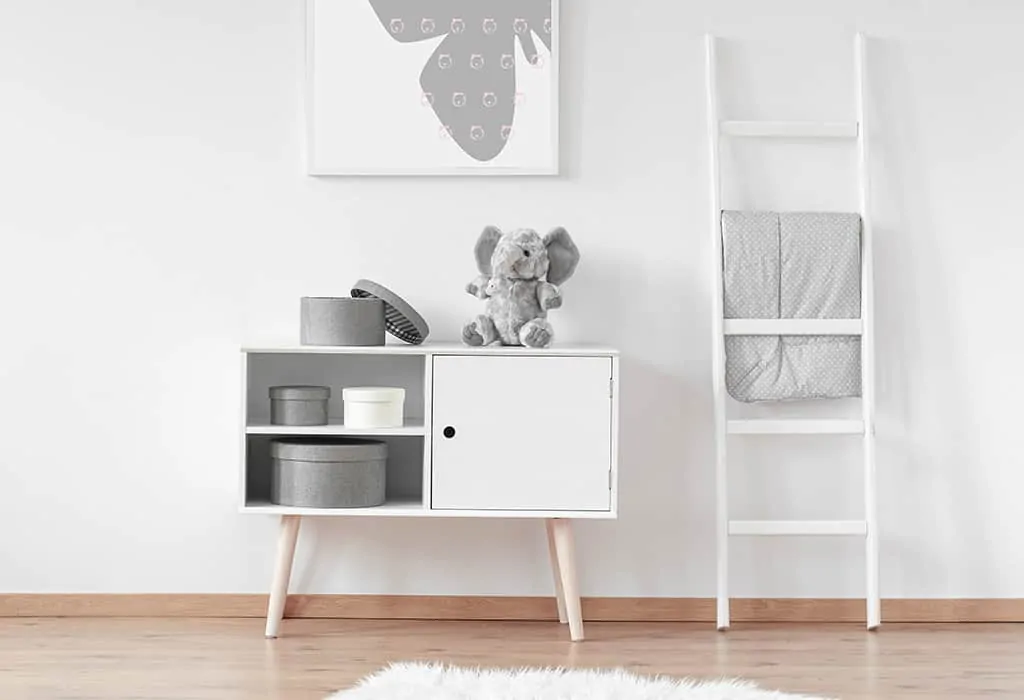
4. Shades of Gray
Really tough call! Deciding on whether to use grey or not has to be very specific and also have a unique way of including it. You can ace it with grey if you use it for purposes of highlighting and can easily go wrong if not correctly used.
On the other hand, using grey as your kid’s room colors for kids can have a negative psychological effect. Pale gray or light grey brings out a ‘void’ view, and this can cause your child to feel isolated. There is a way gray comes out when used that also makes it look outstanding. This can be achieved by using it in patterns to shadow a bright color such as yellow or even silence a dominant color, e.g., crimson.
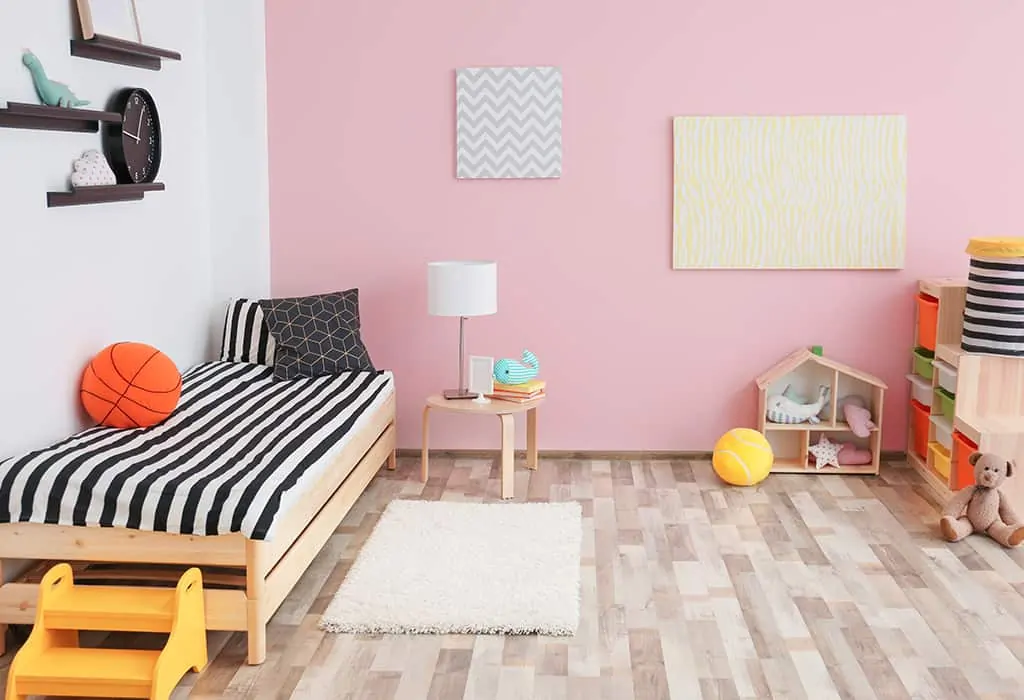
5. Blushing Pink
If your girl likes dolls, has multiple combs, and likes cute dresses, then you have to opt for pink. Contrary to the belief of many, pink can also work for boys though in moderation, of course.
Pink brings out a relaxed aspect, triggers some chemistry, and also a feeling of support. The psychological impact of pink is that the child will be feeling comfortable, and the room will have an atmosphere of care.
The only negative impact of pink is that the vibe eventually fades as a child grows up, and the Barbie feeling eventually vanishes. The excess subjection to pink might be annoying, result in headaches, or even cause tension.
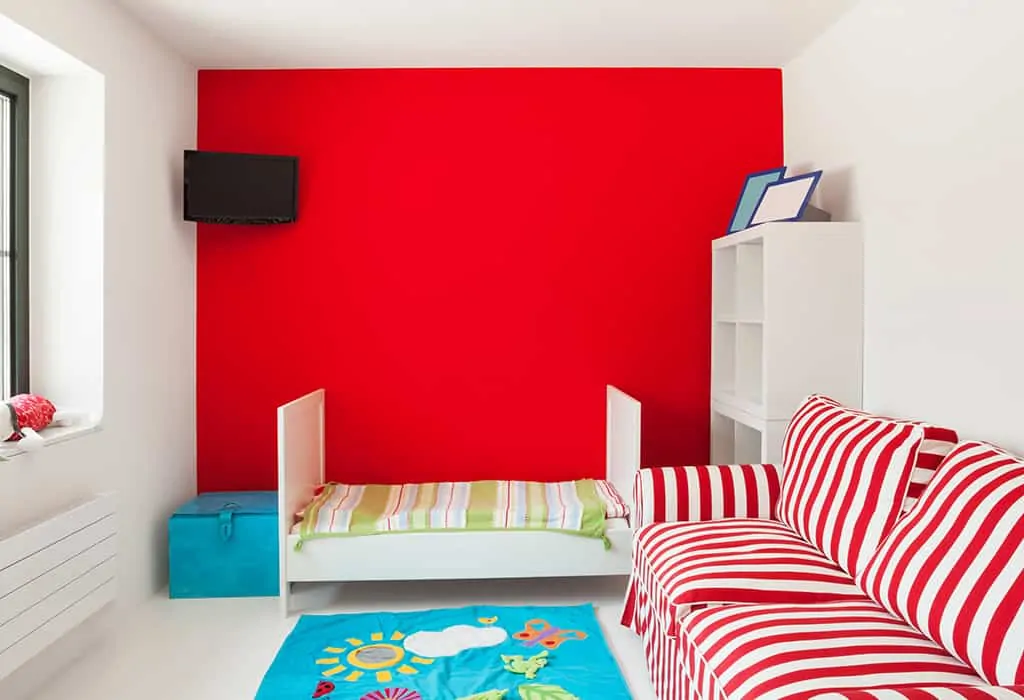
6. Bloody Red
The stimulating factor of red makes it an outstanding choice of neutral colors for the kids’ room. Did you know that red escalates your breathing and heart rate?
Red also makes children hyperactive and can also trigger concentration. That is why many kids’ study room designs have a touch of red in them.
Nonetheless, an excess of red can cause antagonism and restlessness in some toddlers. Red should be used as an additive and not as the main color in rooms. Certain drawings or patterns of red will be quite significant.
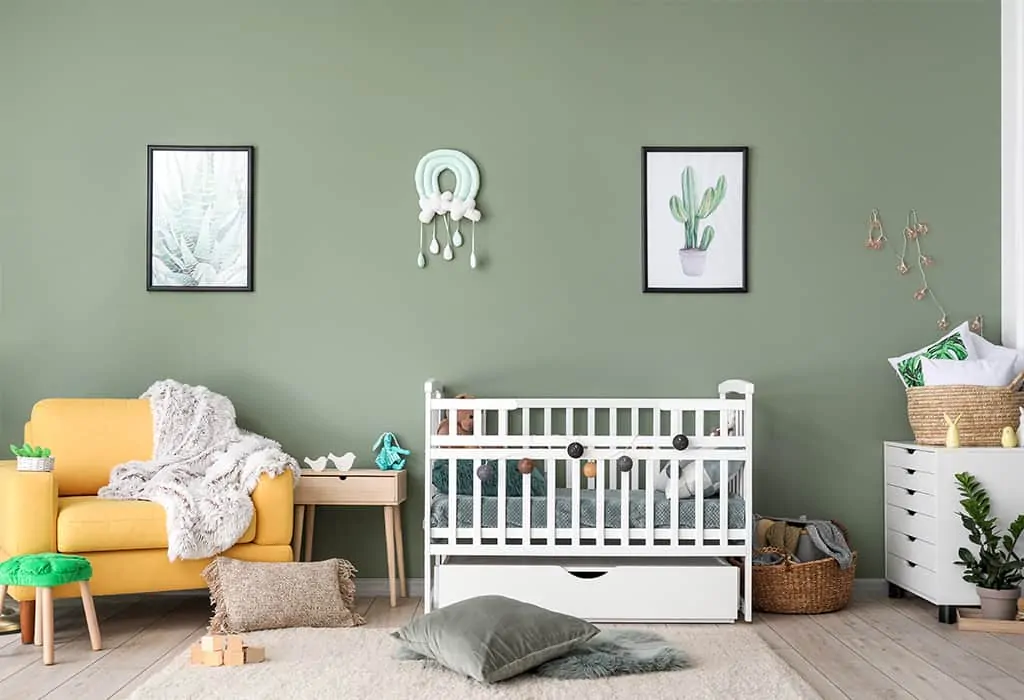
7. Leafy Green
Green can work best in an escape room for kids. There is a natural and forest-like attribute that the color brings out.
Many states prefer green to other colors when it comes to the general theme in their school. The outdoor and exploration feeling is very conducive to learning. Since it helps children concentrate more and better their capacity to think critically and further improve their ability to read through essays due to the chilled atmosphere.
If you’re doing your kid’s room organization, you might as well ensure the place where homework is done has an inclusion of green, and that will guarantee excellence. This fancy color should be met with a darker complexion to give it the room gloomier presentation. Forest green can be too much for a kid, while mint green can provide a great atmosphere to aid in your child’s anxiety.
5 Other Alternatives
Apart from having paintings as the only option of coloring a child’s room, you can as well add a couple of items that can present their unique patterns. Accessories and interior designs spice up the general look of a room. Some of the inclusions you can make in your kid’s room are;
1- Clocks
Whether analog or digital, clocks have a different vibe in a house. Since they need to figure out what the time is frequently, investing in a good looking clock can add beauty to your child’s wall.
You should consider one of those lovely clocks because they could complement the color of the room.
2- Furniture
The bed, wardrobe, and study table should have colors that will blend well with the paint on the walls.
Going for a kid’s room tour will help you with the selection of designs that best suit your kid and also balance the colors in the room. As for the kid’s room storage ideas, a side-bed drawer should have patterns that make it fancy and good looking.
3- Floorcloth
The carpets and mats that are dressed on your kid’s floor should be of high quality and with great taste in color.
One of these kids room rugs should stand out since the walls’ color will require a different color to be able to fit perfectly with the floor.
4- Patterns
Kids love some sort of written mantra or pieces.
Colorful charts and pattern ideas can add some beauty in the room when placed strategically on the walls.
Looking for wall art inspiration? Check out those lists of fantastic wall decals for kid’s room.
5- Beddings
The fabric and designs of your child’s beddings should add flavor to the overall look of the room.
Colorful pillowcases and duvets can decorate the room and give it a great look.
Conclusion
There is a necessity in considering the type of color that you’ll paint the walls of your kid’s room. What you decide may positively or negatively affect your child’s behavior.
What color have you done for your kid’s walls?
What other accessories have you included?
Have you tried blending two colors?

